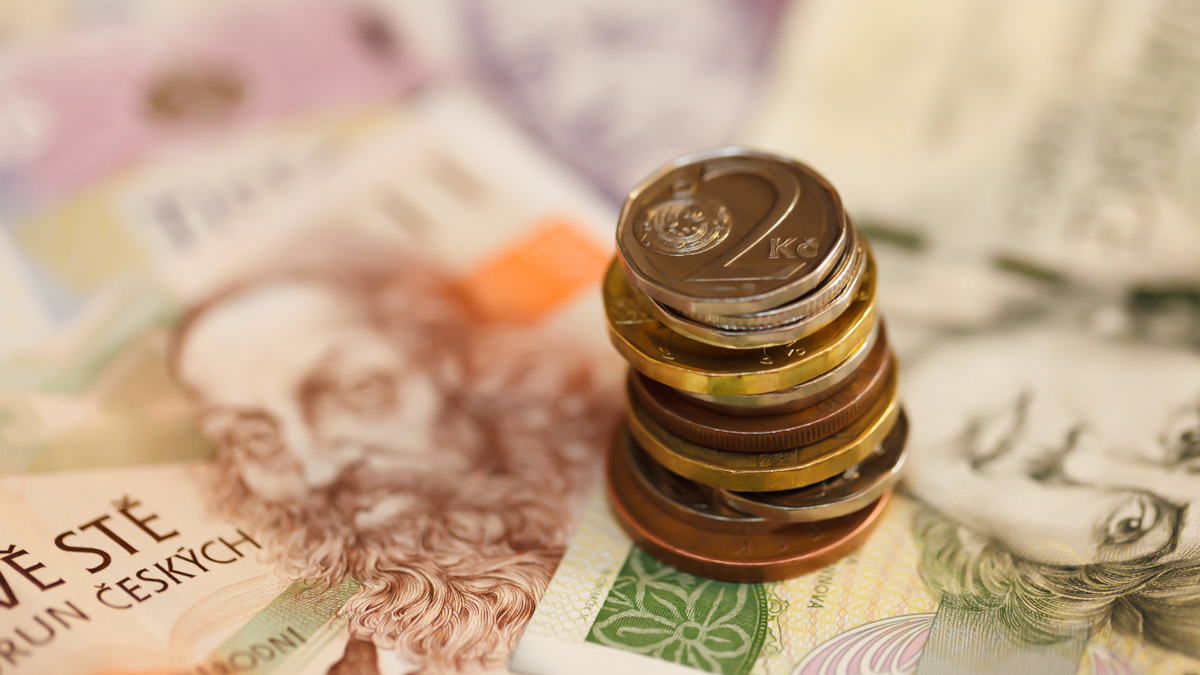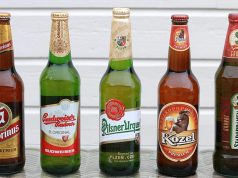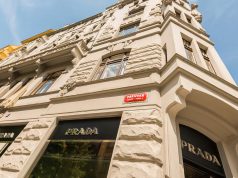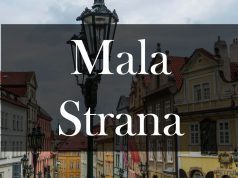A lot of tourists believe that Czech currency is the Euro. But it isn’t so. Czech Republic is a part of the European Union but is out from Euro zone and has its own currency. The Czech Crown – Česká Koruna (Korun). Short abbreviation is CZK.
1 CZK consists of 100 halers. Nevertheless, you will not see any sub-crown coinage because it is no longer in use.
Nominal of the coins: 1,2,3,10,20,50 CZK.
Nominal of the banknotes: 100,200,500,1000,2000,5000 CZK.
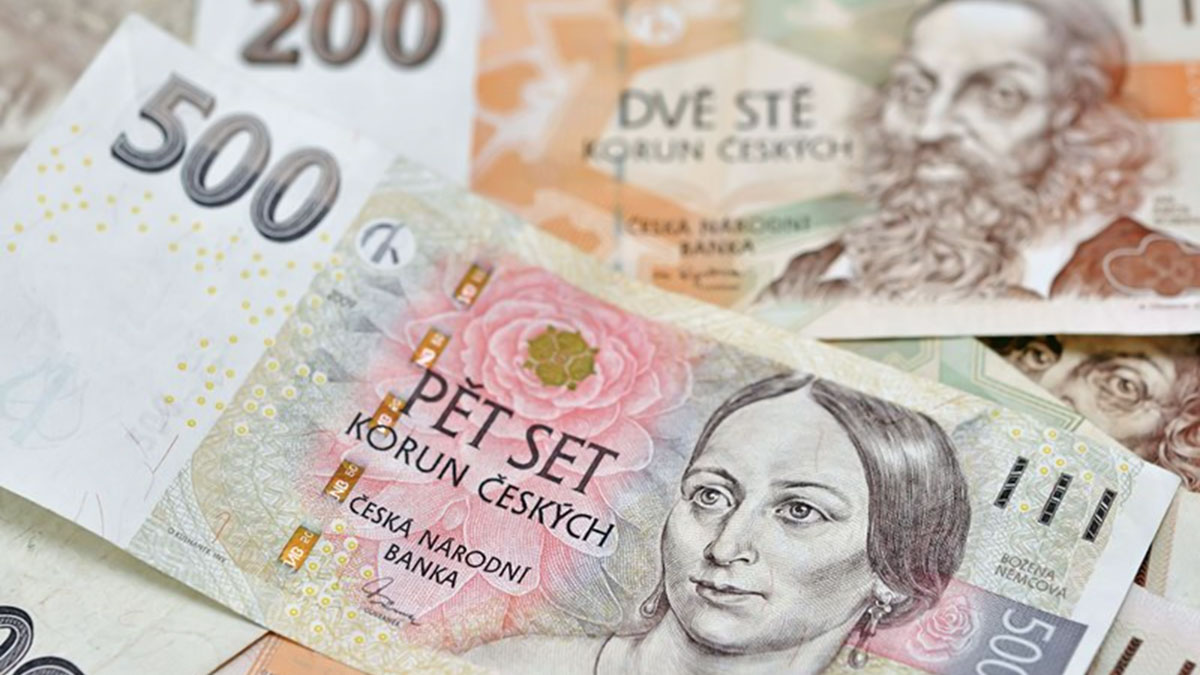
Interesting fact, that the prices in shops have some odd amounts, such as 35, 75, 90, etc. All of them are equaled to the lower or to the higher number. For example – 8.45 equals to 8 and 8.55 to 9 accordingly.
Banknotes
The author of drawings on paper currency signs is the national artist Oldřich Kulhánek.
On the 100 banknote there is the figure of Charles IV and the emblem of the country on the other side. A banknote of 200 CZK is adorned with the image of great teacher Jan Amos Komensky and two hands – of an adult and a child in touch. On 500 CZK banknotes you may see the figure of the writer Božena Němcová and the female image surrounded by flowers.
The most common banknote is 1000 CZK. People usually call it simply – “palacký”, because of the picture of František Palacký (Czech historian, politician and the most influential person of the Czech National Revival) depicted on it. There is also a 5000 CZK banknote – the biggest one, which shows a portrait of the first president of the republic.
Nine years ago the Czech Crown was the second weakest currency in the world. At the same time a banknote of 1000 CZK improved protection and was recognized as the best in the world.
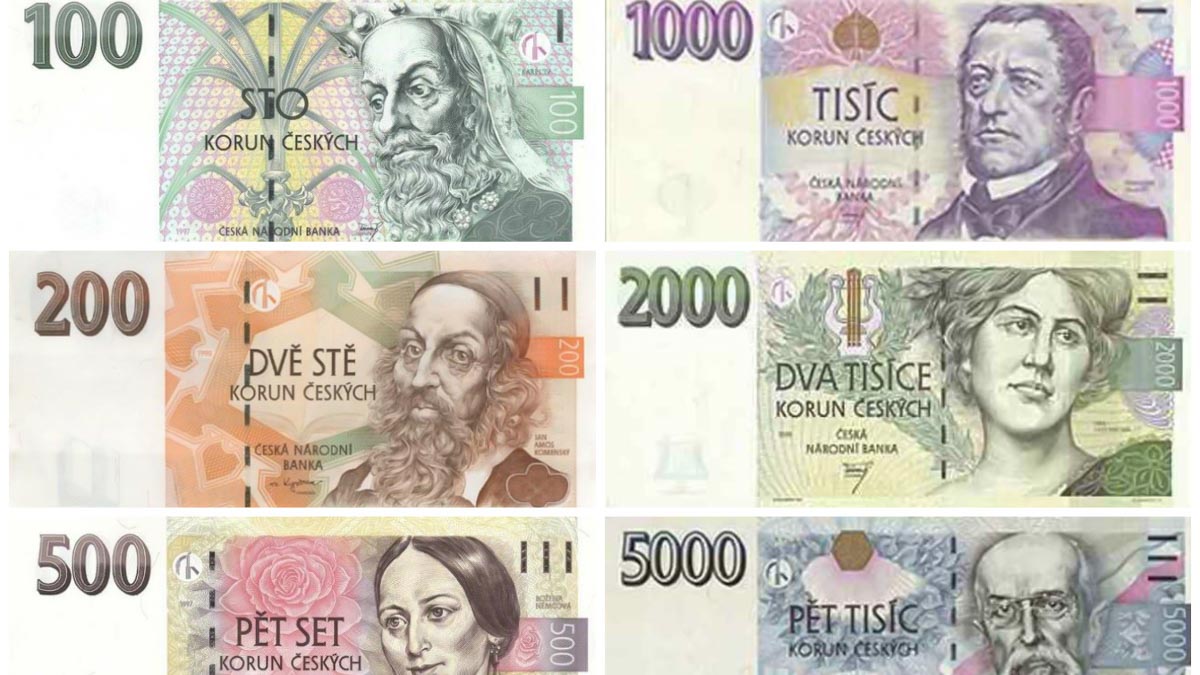
Coins
Czech coins are varied in size and shape. They are produced predominantly from steel, given a silver sheen and galvanized with nickel. The golden and copper ones are made with the help of copper and copper-zinc alloy.
1 Koruna coin wears the image of St. Wenceslas’ crown depicted on it. The coin of 2 CZK nominal contains the value designation, the Czech Crown symbol (Kč) and the national decoration with the bird symbol. The next one is 5 CZK coin with the Charles Bridge over the Vltava and a symbolic sheet of linden on it.

There are two variations of the 10 CZK coin: with the St. Peter and Paul Cathedral in Brno and the clock, the second one is dedicated to the millennium. 20 CZK coin also has 2 varieties: with a Statue of St. Wenceslas at the Wenceslas Square in Prague and with the drawing of an astrolabe. The 50 CZK coin depicts an urban Prague landscape with its ancient architecture and an inscription on the outer circle.
On the reverse side of all coins there is an inscription “Česká republika” next to the drawing of a lion.
Czech currency for tourists
Judging by the European standards and prices in other popular cities the answer is clear. Czech Republic is very affordable for a common tourist. The exchange rate varies, but for 1 Euro you will get approximately 25 CZK, and for 1 USD – 20 CZK (approximately).
How to exchange money in Prague
Here comes the tricky part. We’d like to give you some hints in order not to be fooled. There are 3 the most common ways to exchange money and get czech currency.
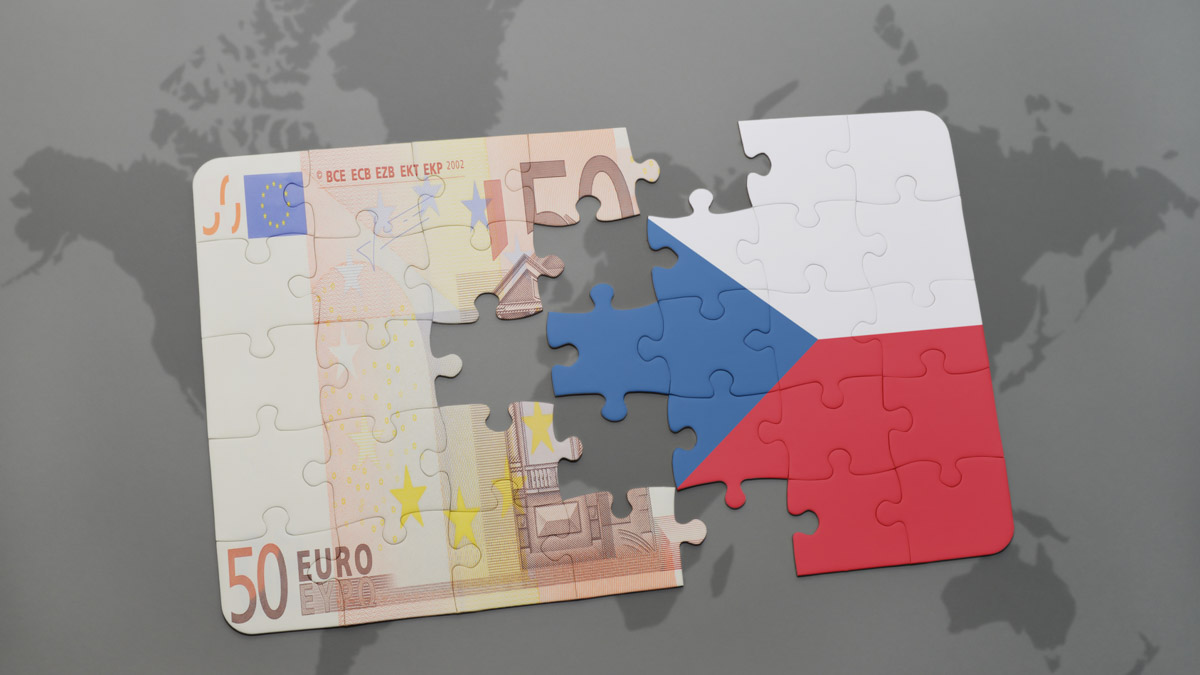
Exchange before going on the vacation. People consider it to be the safest way and it really can be called so. When arriving to another country you already have money. It saves your nerves, time and you are ready for the trip. But there is a drawback.
The Czech Koruna is not an international currency. Thus banks in your country may have poor exchange rate and you’ll lost some money. Besides, carrying a lot of cache by yourself is not safe enough.
Exchange by the arrival at the airport. You will probably need money for the transport to get to the centre or to a hotel. But very often airport exchange points do not have competitive rates.
Hint: If you do not have CZK at all – exchange the amount to pay for the bus or taxi only. Exchange the rest in the city with more favorable rate.
Bank machine – ATM. The most popular among tourists method: you do not have to carry a lot of cash; will not have any cash (czech currency) left by the arrival home; can easily get money almost everywhere. Its major advantage is that you are free from comparing rates. All operations go through the bank’s rate. But keep in mind that the bank will probably take some commission fee for the operation and usage of foreign ATM.
Hint: Take out the sum of money for a couple of days at once. Thus you will not have to pay the commission fees all the time.
Do not use services of the strangers on the streets. There are a lot of people who offer an excellent and tempting rate of the czech currency. Do not fall into this bait. Most likely you will be fooled or even left without money. Use bank services only.
Can I pay in Euro?
Nevertheless, if you do not have enough CZK to pay for the bill – do it in Euro. Most of restaurants, shops or tourists’ attractions accept European currency. But you will receive CZK crowns in change.





